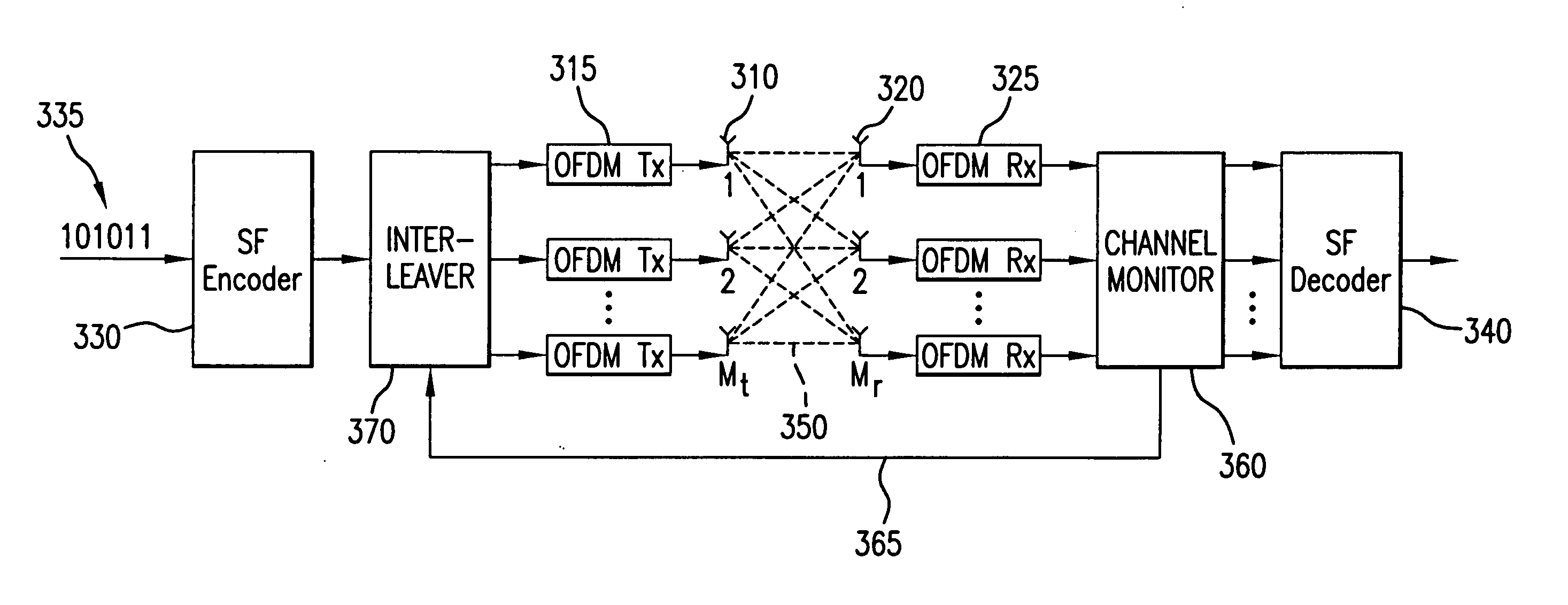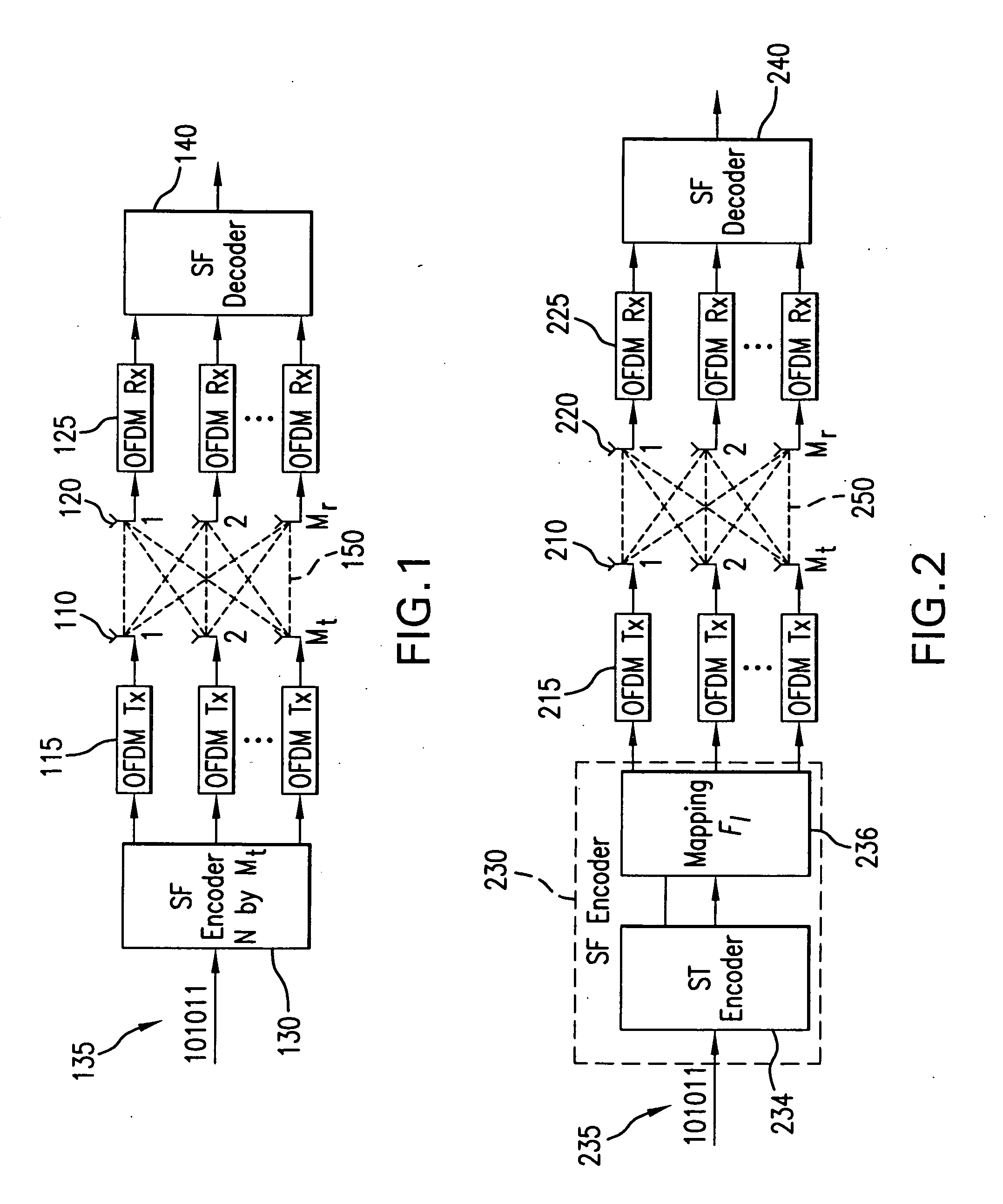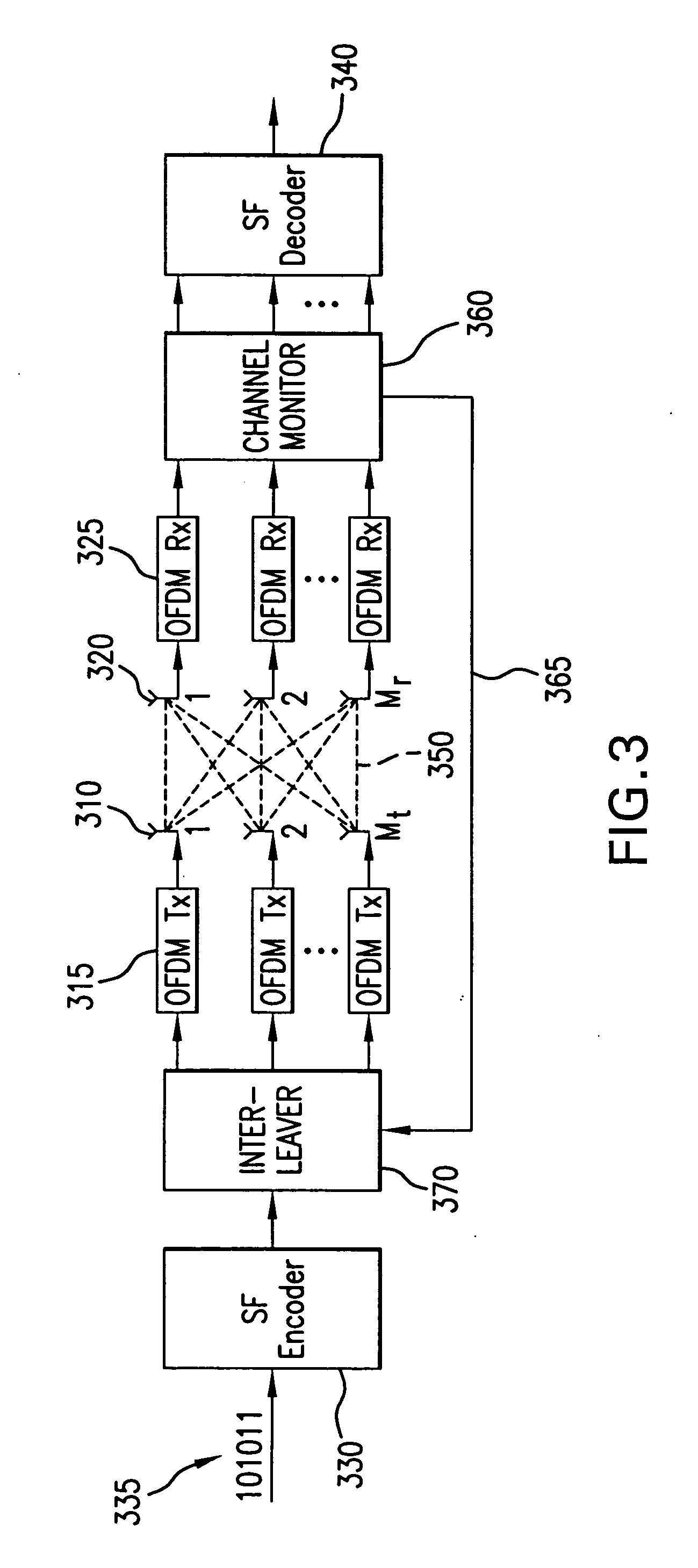Systems and methods for coding in broadband wireless communication systems to achieve maximum diversity in space, time and frequency
a technology of coding system and wireless communication system, which is applied in the field of coding data streams in a wireless communications network, can solve the problems of elusive full diversity across all three space, time and frequency, and the previous sf coding system has fallen short of achieving full diversity in both space and frequency, and achieves maximum space-frequency or space-time-frequency diversity
- Summary
- Abstract
- Description
- Claims
- Application Information
AI Technical Summary
Problems solved by technology
Method used
Image
Examples
Embodiment Construction
1. Transmission Channel Model
[0030] To illustrate certain aspects of the present invention, it is believed beneficial to characterize the transmission channels by way of a model. Referring to FIG. 1, there is shown a MIMO-OFDM wireless communication system having Mt transmit antennas 110, Mr receive antennas 120 and N subcarriers. Each channel 150 is assumed to be a frequency selective fading channel between each pair of transmit and receive antennas having L independent delay paths and the same power delay profile. The channel impulse response of each MIMO channel is assumed to be constant over each OFDM block period, but may vary from one OFDM block to another. For the k-th OFDM block, the channel impulse response from transmit antenna i to receive antenna j at time τ can be modeled as hi,jk(τ)=∑l=0L-1αi,jk(l)δ(τ-τl),(1)
where τl is the delay and αi,jk(l) is the complex amplitude of the l-th path between transmit antenna i and receive antenna j. The αi,jk(l)'s are modeled ...
PUM
 Login to View More
Login to View More Abstract
Description
Claims
Application Information
 Login to View More
Login to View More - R&D
- Intellectual Property
- Life Sciences
- Materials
- Tech Scout
- Unparalleled Data Quality
- Higher Quality Content
- 60% Fewer Hallucinations
Browse by: Latest US Patents, China's latest patents, Technical Efficacy Thesaurus, Application Domain, Technology Topic, Popular Technical Reports.
© 2025 PatSnap. All rights reserved.Legal|Privacy policy|Modern Slavery Act Transparency Statement|Sitemap|About US| Contact US: help@patsnap.com



